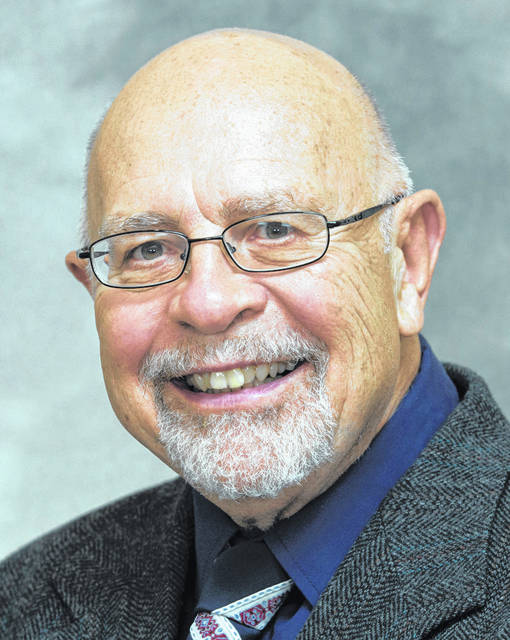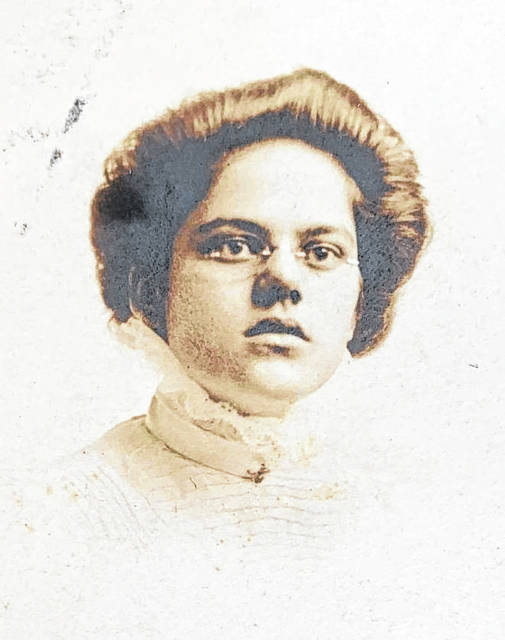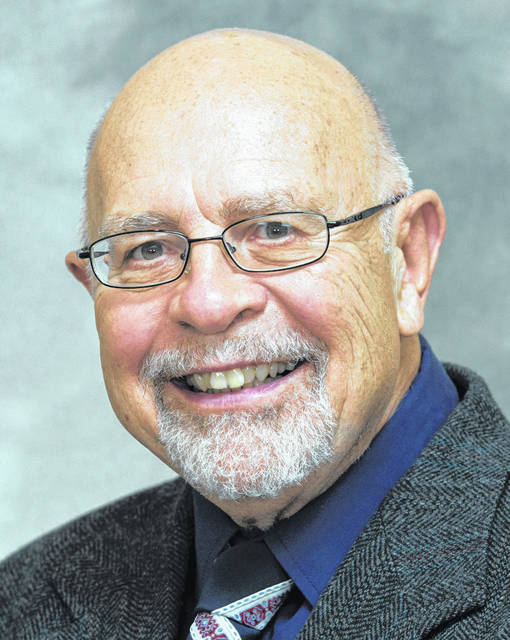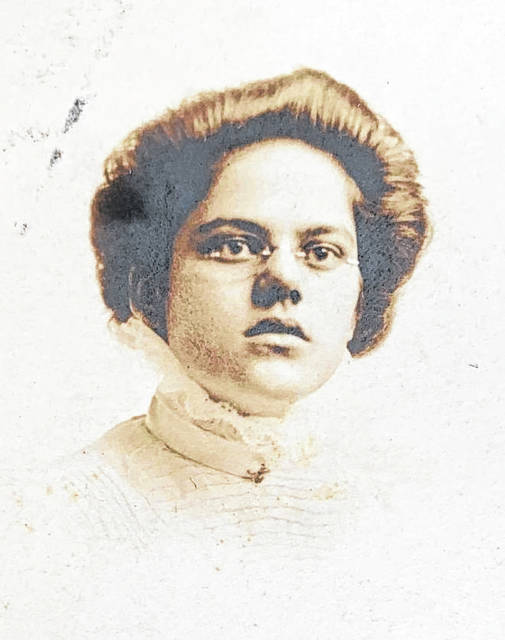



I wanted to write a little something about the National Annie Oakley Center housed at Greenville’s Garst Museum.
Naturally I walked one whole block from our house to the Union City, Ind., Carnegie Library. Always helpful library director Lawrence Sexton found me a biography by the late Darke County author Annie Fern Swartwout. It’s a signed copy in fact.
It turns out that Swartwout captured the life of Darke’s own Shooting Star in a 1947 biography titled “Missie: An Historical Biography of Annie Oakley.”
Naturally, I had to snoop a bit to learn who this Mrs. Swartwout was.
The Garst’s Eileen Litchfield was kind enough to supply a photo of Mrs. Swartwout. She said it was donated by Annie Oakley Center Foundation fellow board member Randall Swartwout, Fern’s grandson.
The photo, taken in 1915, shows an earnest young woman with hair in a carapace bun, a prim neck collar, and schoolgirl wire-rims. Later in life, another photo shows that her full lips turned downward and she wore those big frames of the JFK era. She looked quite formidable near the end of her life in 1962.
Mrs. Swartwout was the niece of Phoebe Ann Moses, better known by her entertainer’s handle of Annie Oakley. Her mother was Annie Oakley’s youngest sister.
At the end of her life she lived on Union City Road, also known as State Route 71.
Newspaper clippings tell us that shortly before her death, she sold 196 Oakley mementos to the Garst Museum. The idea for the sale came from Mrs. Swartwout’s son, Ronnie.
“I once thought it was sacrilegious to sell a collection, but I’ve come to decide that two or three generations from now the only person who would take care of these things is someone who paid good money for them,” she said to a reporter.
There were opera glasses (a gift from Queen Victoria), lamps, a loving cup, letters from celebrities such as Will Rogers, and at least one firearm. Some were given as presents from royalty when Missie toured Europe and Russia.
“Every time (Missie) gave me something, I’d save it because I thought so much of her,” Mrs. Swartwout once said. “She was one of the most unselfish women I have ever known.”
One regret she had was that a trunk filled with Annie’s firearms had apparently been shipped to an acquaintance after Annie’s husband, Frank Butler, died a few days after her death. Frank died with Mrs. Swartwout tenderly caring for him.
Years after Mrs. Swartwout’s death at 74 in 1962, a reporter solved the mystery in 1980. The trunk full of historical items had come into the possession of a heavy drinker who exchanged items in the trunk for liquor. The bulk of the items was sold to a Florida collector by the widow of the man after he had died of alcohol-related health issues.
Very few of the gold medals that Missie won still exist. Most were melted for the gold and the moneys were donated to an orphanage for its library, a favorite charity of Missie’s.
Many more clippings I dug up told — no surprise — of Mrs. Swartwout’s passion for firearms used responsibly.
One obituary estimated Mrs. Swartwout taught more than 100,000 school children about gun safety. She also addressed schools, civic organizations and ladies’ societies who wanted to hear more about Annie’s life and adventures.
Annie, of course, was famous for her shooting feats while traveling with Buffalo Bill and like showmen. The niece lived two years with Missie and Frank while studying in New York. After graduation, 1910-1911, Mrs. Swartwout, a fine horsewoman, actually toured with Annie as part of the Young Buffalo Wild West show.
She rode in the grand entry parade, according to the Dayton Daily News.
For much of her life, Mrs. Swartwout taught music. She married a Greenville linoleum installer named Norman Swartwout. He was a craftsman who especially liked to carve birds and other animals from nature with his pocket knife.
At Christmas, the Swartwouts sent out greeting cards that Norman turned out one at a time on an old contact press. They started out as pieces of linoleum tile.
I’ll be returning the biography soon to the Union City Library. It’s rather charming though not as historically deep as an Oakley biography written by Walter Havighurst, a Miami University of Ohio professor.
And, of course, you can see the mementos for yourself at the Garst Museum at 205 North Broadway in Greenville.
Now, if you’ll excuse me, I’ll get started on a future column regarding the love story of Annie Oakley and Frank Butler.






